Summer Pet Care Tips: Keep Your Dog or Cat Safe and Healthy All Season Long
Top 3 Takeaways
Why Summer Can Be Dangerous for Pets
Summer in Orange County is beautiful, but it comes with a unique set of hazards for pets. Dogs and cats are more sensitive to temperature changes and environmental hazards than humans. From overheating and dehydration to hidden threats like foxtails and snake encounters, the warmer months bring a sharp increase in preventable veterinary emergencies. At Bliss Animal Hospital, we often see an uptick in urgent cases during the summer—many of which could have been avoided with a few precautions. Knowing how to anticipate and respond to these risks is essential for keeping your pet safe and comfortable all season long.
Rising Temperatures and Heatstroke
When the mercury climbs, so does the risk of heat-related illness in pets. Dogs, in particular, are prone to heat exhaustion and heatstroke due to their limited ability to sweat. Cats are generally more adept at self-regulating, but they are not immune either—especially seniors, brachycephalic (short-nosed) breeds, and overweight pets.
“Even a short walk in peak afternoon heat can be dangerous,” warns Dr. Nai. “We’ve seen cases where dogs collapse within minutes of being outside.”
Look for signs like heavy panting, drooling, disorientation, vomiting, or collapse. Heatstroke is a veterinary emergency—cool your pet gradually and call us immediately.
Dehydration and Lack of Shade
Hydration plays a major role in regulating a pet’s body temperature. In Orange County’s dry, arid climate, even short stints outside can quickly lead to dehydration. Pets can’t ask for water, so it’s up to us to ensure they have constant access to it—whether you’re out for a hike, in the backyard, or on a family trip.
Bring collapsible bowls, portable bottles, and make shade a priority. Set up a covered area, umbrella, or tent if you’re spending time outdoors. Watch for dry gums, sunken eyes, and lethargy—signs your pet may need water urgently.
Hot Pavement and Burned Paws
Even when the air feels tolerable, pavement can exceed 130°F in direct sunlight. That’s hot enough to cause second-degree burns in minutes.
“We see burned paw pads every summer—especially after mid-day walks,” says Dr. Sam.
Test the ground with your hand: if you can’t hold it there for five seconds, it’s too hot for your pet. Use booties or plan walks early in the morning or after sundown. Stick to grass or shaded trails whenever possible.
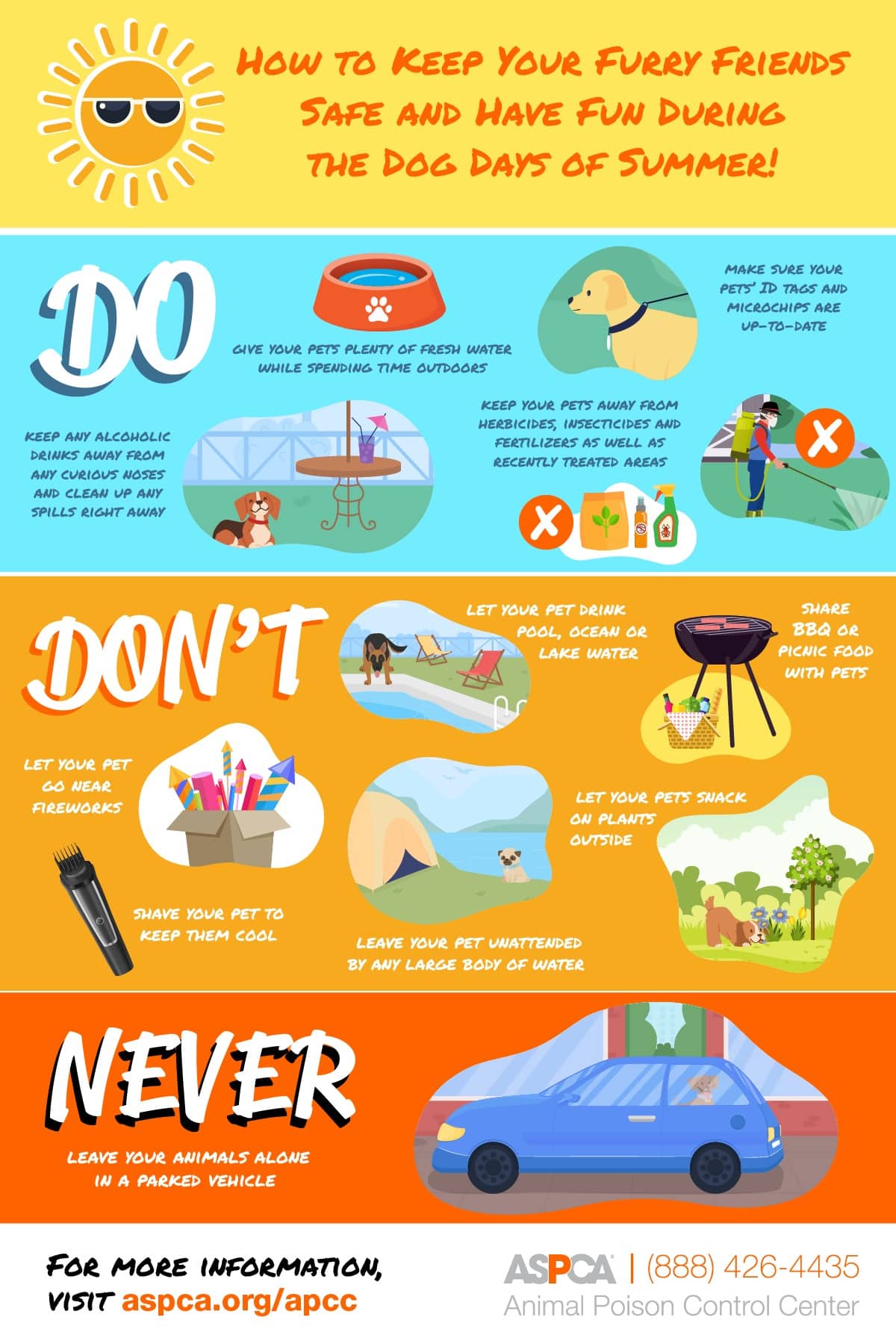
Essential summer safety do’s and don’ts to keep your furry companions happy, healthy, and protected during the hottest months—courtesy of the ASPCA.”. Source: https://www.aspca.org/
Summer Parasite Prevention: Fleas, Ticks, and Heartworm
While fleas, ticks, and mosquitoes can pose a threat year-round in Orange County, the summer months mark their peak activity. Warm, humid conditions create ideal breeding environments for these parasites, many of which carry diseases that can seriously impact your pet’s health. Even indoor-only pets are at risk, especially if other animals or humans bring parasites inside. At Bliss Animal Hospital, we regularly see pets with allergic reactions to flea bites, tick-borne illnesses, and even life-threatening heartworm disease—all of which are largely preventable.
Fleas and Ticks
Fleas can trigger intense itching, skin infections, and allergic reactions. Ticks transmit dangerous diseases like Lyme and Ehrlichiosis.
“Flea eggs can survive for months in shaded backyards,” says Dr. Sam.
Even one missed dose of prevention can lead to a full-blown infestation. Use year-round preventives, and inspect your pet’s coat daily—especially after time spent in parks, trails, or gardens.
Mosquitoes and Heartworm
Heartworm is transmitted by mosquitoes and is fatal if untreated. The worms invade the heart and lungs, causing permanent damage. Southern California mosquitoes are active nearly year-round, but activity spikes in summer.
Keep your pet on monthly heartworm prevention and schedule annual testing. It’s much easier—and far safer—to prevent heartworm than to treat it.
Snake Bites and Foxtails
Summer hikes can expose pets to rattlesnakes and foxtails. Snake bites are medical emergencies, while foxtails can burrow into your pet’s ears, nose, or paws—sometimes requiring surgery.
Avoid tall grass or dense brush, keep dogs leashed, and perform post-walk checks. Seek immediate vet care if your pet limps, sneezes repeatedly, or shakes their head after a hike.
Travel Safety for Pets in Summer
Many families take advantage of summer vacation to travel, whether for a weekend getaway or a longer road trip. For pet owners, this means planning ahead to ensure their animals are safe, comfortable, and accounted for—whether they’re coming along or staying behind. Travel introduces variables that can be stressful or even dangerous for pets, from car heat to unfamiliar environments. Thoughtful preparation, including packing pet essentials, securing boarding or pet sitters early, and reviewing vet records, is key to ensuring your pet’s safety while you’re on the move.
Never Leave Pets in a Parked Car
Even on a mild day, a parked car can become an oven in just minutes.
“It only takes 10 minutes for a car to reach lethal temps,” emphasizes Dr. Nai.
Leaving pets in the car, even for a quick errand, is extremely risky. Heatstroke can set in quickly and lead to permanent damage or death. If you can’t bring your pet inside, it’s best to leave them at home.
Air Travel and Car Trips
If flying, research airline pet policies and get a health certificate. For road trips, pack water, food, calming aids, and vet records.
Secure your pet in a well-ventilated crate or harness. Take breaks every 2–3 hours. If your pet is prone to motion sickness, ask us about preventive medication.
Boarding and Pet Sitters
Start researching early. Ask about facility credentials, climate control, vaccination requirements, and staff training.
If using a sitter, provide clear instructions, emergency contacts, and your pet’s medical needs. A well-prepared plan reduces stress for everyone.
Sun Protection and Skin Safety
Most pet owners are surprised to learn that dogs and cats can suffer from sunburn, just like humans. Prolonged exposure to direct sunlight—especially during the peak midday hours—can damage the sensitive skin of pets, particularly those with light-colored coats, short hair, or areas of exposed skin. In addition to sunburn, UV rays can contribute to more serious conditions like skin cancer over time.
Sunscreen for Pets
Only use pet-safe sunscreen—never human products. Apply to sensitive areas like the nose, belly, and ear tips.
Reapply every few hours, especially after swimming or grooming. If your pet tries to lick the sunscreen off, try distraction techniques or a recovery collar.
Shaving Fur: Good or Bad Idea?
“Never shave a double-coated dog without consulting your vet,” advises Dr. Sam.
While some short-haired breeds benefit from summer trims, double-coated dogs rely on their fur to regulate temperature. Instead of shaving, brush regularly to remove excess undercoat and keep the skin ventilated.
Summer Nutrition and Exercise
As temperatures rise, your pet’s metabolic and activity patterns often shift. Dogs and cats may be less active during hot spells, drink more water, or even lose their appetite. This means their nutritional needs and exercise routines need to be adjusted thoughtfully.
Summer Diet Tips
Add moisture-rich food or water-based treats to promote hydration. Offer frozen broth cubes or dog-safe popsicles. Avoid high-fat leftovers or BBQ scraps, which can cause pancreatitis.
Never give pets grapes, raisins, onions, garlic, alcohol, or corn cobs—all are toxic or dangerous.
Exercise Timing and Intensity
Avoid activity during the hottest parts of the day. Walk your pet before 9 AM or after 7 PM.
Use indoor puzzle toys, treat balls, or play fetch in shaded areas. Watch for fatigue, heavy panting, or limping after exercise.
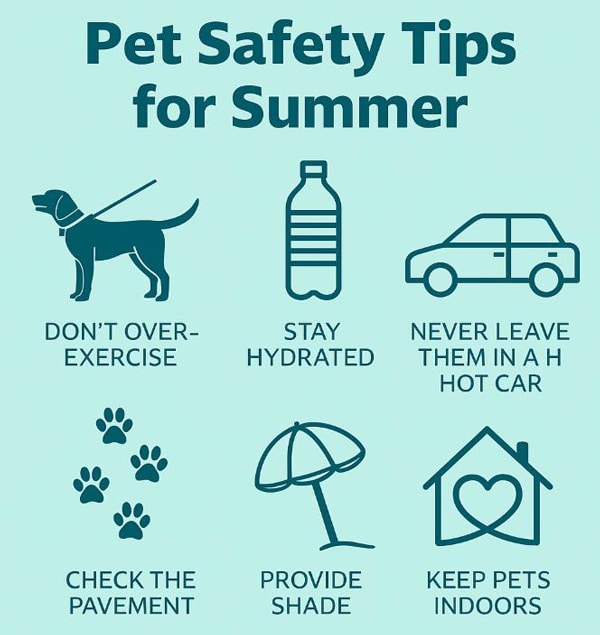
Bliss Animal Hospital’s essential summer safety checklist for pets—six simple but crucial tips to help keep your furry companions cool, safe, and healthy during the hottest months.
Bonus Section: Local Hazards in Orange County
Orange County’s warm, coastal environment comes with unique summer risks. From native wildlife to environmental allergens, many summer dangers are preventable with awareness and preparation.
Coyotes and Wildlife Encounters
Coyotes are active in summer, especially around canyons, parks, and trail systems.
Keep pets on-leash and never leave them outside unsupervised. Bring food and water bowls inside, and reinforce fences or barriers.
Pool Safety and Drowning Risks
Not all pets are natural swimmers. Even confident dogs can panic if they can’t find the stairs.
Install pet-friendly pool ramps, teach your dog where the exit is, and never leave pets unsupervised near water.
Seasonal Allergies
Grasses, pollens, and molds peak during summer. Common signs include scratching, watery eyes, licking paws, and sneezing.
Schedule an allergy exam if symptoms persist. Medications, shampoos, or diet changes can bring relief.
When to Call Your Vet: Signs of Summer Emergencies
In summer, minor issues can escalate quickly. Heatstroke, dehydration, allergic reactions, and snake bites can become life-threatening in minutes.
Red Flag Symptoms in Dogs
Red Flag Symptoms in Cats
What to Expect at an Emergency Visit
At Bliss Animal Hospital, we provide rapid evaluation, IV fluids, oxygen therapy, and diagnostics as needed.
Bring medical history, list of symptoms, and any known exposure (heat, foxtails, bites, etc.). Call ahead if possible to expedite triage.
FAQs About Summer Pet Safety
Can I take my dog to the beach during a heatwave?
Only if you’re going during cooler hours—typically early morning (before 9 AM) or late evening (after 7 PM). Midday beach visits can expose your dog to heatstroke, sunburn, and burned paw pads. Bring a large water supply, shade (like an umbrella or pop-up tent), and a cooling mat or towel. Watch for signs of overheating like heavy panting or reluctance to walk. Some beaches may also have hot sand, sharp shells, or jellyfish—always scout the area before letting your dog off-leash.
Are cooling vests and mats safe and effective for pets?
Yes, when used correctly. Cooling vests, mats, and neck wraps are designed to lower your pet’s surface temperature through evaporation or gel technology. They are especially useful for brachycephalic breeds, senior pets, and those prone to heat intolerance. However, they should never replace supervision or access to shade and water. Choose products labeled as pet-safe, and test them indoors before using them outdoors for extended periods.
What should I include in a summer pet emergency kit?
A well-stocked kit can make all the difference in a crisis. Include:
Store it in your car or go-bag, especially if you hike or travel often.
How can I tell if my pet is overheating or just tired?
The line between normal tiredness and early heatstroke can be thin. Signs of overheating include:
“If your pet seems ‘off’ after being in the heat, don’t wait. Err on the side of caution,” advises Dr. Nai.
Move them to a cool space, offer small amounts of water, and contact your vet right away.
Are ice cubes safe for dogs and cats during hot weather?
Yes, in moderation. Ice cubes or frozen broth cubes can be a fun and safe way to cool your pet down, especially when added to their water or used in enrichment toys. However, never give ice water to a pet showing signs of heatstroke—rapid temperature changes can cause vasoconstriction and worsen symptoms. For overheated pets, offer cool (not ice-cold) water and contact your vet immediately.
Should I board my pet or hire a sitter during summer trips?
It depends on your pet’s personality, medical needs, and routine.
Bonus Tip: Schedule a Summer Wellness Exam
Even healthy pets can develop seasonal issues. A quick checkup can catch problems early and update preventive care.
“Many problems can be prevented with a summer wellness exam,” says Dr. Nai. “Parasite control, allergy management, and hydration are all easier to address proactively.”
Call (949) 354-5201 or book an appointment online with Dr. Nai or Dr. Sam today to ensure your pet is safe, happy, and ready to enjoy the season.
About Bliss Animal Hospital
Our team, led by Dr. Nayara Pataro and Dr. Sam Amirshahi, is dedicated to providing compassionate, top-rated care right here in South Orange County. With a strong emphasis on relationships and personalized veterinary care, we’re here to support you and your pet’s health and happiness. If you’re looking for convenient, high-quality care nearby, check out our veterinarian services in Lake Forest, CA and surrounding areas like Veterinarian near Mission Viejo, CA, Irvine, CA Veterinarian (Great Park and Portola Springs) and vet near Rancho Santa Margarita, CA.
Meet Our Team
The blissfull faces behind the care
Driven by compassion and purpose, here is the team who will work to make a difference in your pet’s life. Every single visit.



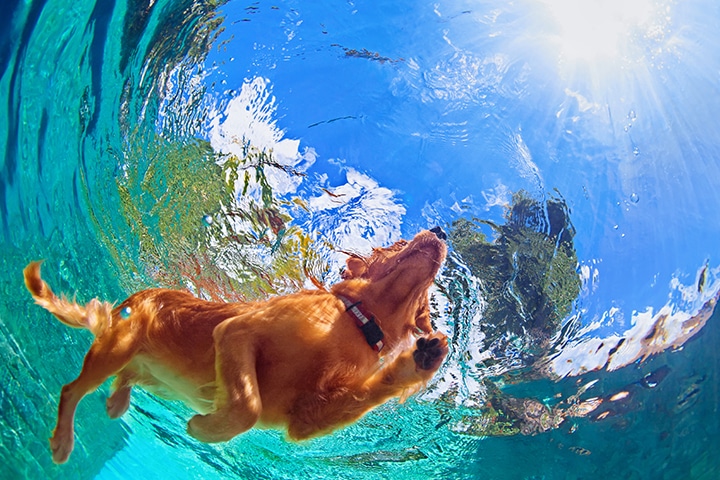
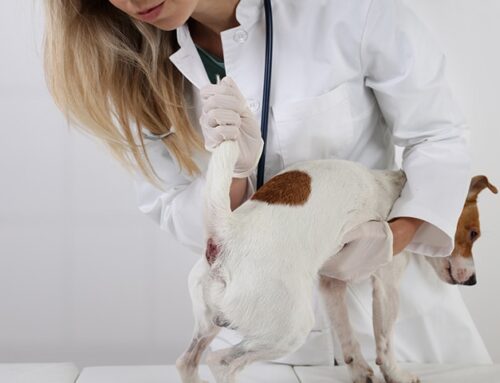
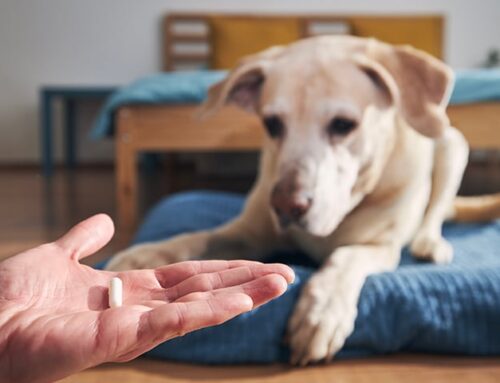





Leave A Comment